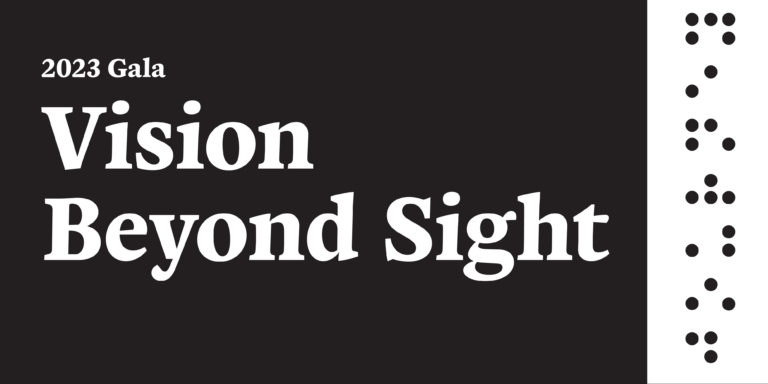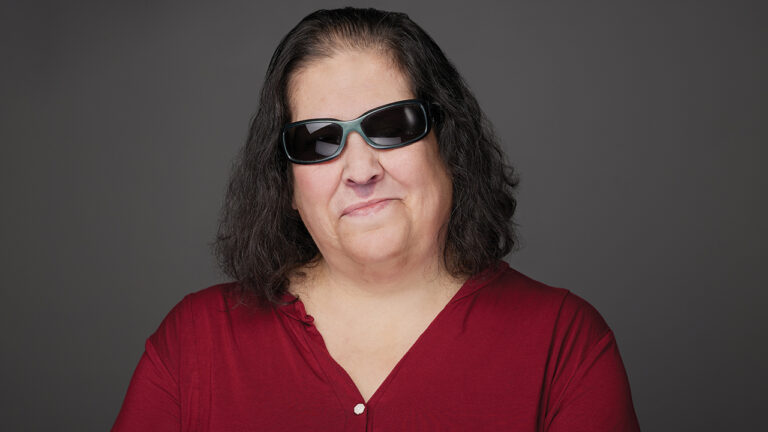A person new to vision loss or being visually impaired might find tasks–like making a sandwich or identifying food temperature–challenging. You must learn an entirely new set of skills, viewing your cooking space and surroundings without your eyes to guide you. Mastering some simple skills and techniques can set you on the path to success in the kitchen. With practice, cooking can again, become a manageable task to complete independently.
When you are in the kitchen, your safety is the most important thing. Accidents happen but most can be avoided with careful and precise planning. Working methodically and without rushing will help you remain accident free.
- Keep your sleeves rolled to your elbows so they are out of the heat.
- Use long oven mitts that cover your hands and arms when cooking with your oven.
- Set a timer for your food.
- When peeling vegetables and fruits, use a vegetable peeler instead of a knife.
- When spreading butter or peanut butter, practice on toast. If you’re spreading a thicker condiment, try using the back of a spoon.
- Use a pizza cutter to cut a sandwich.
When chopping food, use a Flexible-Arm Task Lamp to provide extra light. Consider using a color-contrasting reversible cutting board with a pivot knife attached. Use the white side for lighter foods like apples and carrots and the black side for things like onions.
If using a knife is a concern, once you learn where the curved blade is and how to control it, you’ll be cutting things easily regardless of visually impaired struggles. To locate the blade, rock the edge of the blade against a solid surface.
When pouring and measuring, it is a good idea to consider utilizing color-contrasting tools. Use a darker pitcher for pouring things like milk, sugar and flour. White pitchers can be used for pouring darker liquids. Carefully feel for the cup’s inner lip with one hand and the pitcher’s spout with the other. If you’re worried about spillage, you can fill the glass over the sink. Keep a finger just below the inner lip of the glass while pouring. You can usually hear when the glass is nearly full, but you’ll feel the liquid touch your fingertip. When measuring spices, it’s best to pour them into your hand rather than into a measuring spoon. Some spice jars have large openings so you might mistakenly add too much when only a small amount is required.
- Turn on the stove only after the pan is in place. Always keep the heat-resistant handle turned inward so it doesn’t get knocked to the floor.
- Before turning on the oven, be sure all the racks are locked in place.
- To turn food, you can use a double spatula, two spatulas joined by tongs. This tool gives you greater control of the food you’re flipping.
You must use your other senses to determine if food is done. For baking, you can use touch or the toothpick test. Determine if chicken is done by checking the meat temperature with a talking thermometer. Listening for specific sounds can also help you determine whether something is ready or not.
Many of the products you can use to cook successfully are inexpensive and easy to find. You can purchase measuring spoons and cups with braille, large print and tactile markings. Or you can buy labelling products such as raised dots, a labeler and labeling sheets to indicate oven temperatures or numbers on a microwave.
If you’d rather purchase ready-made braille labels, you can find them here. From labels for beer and soda, frozen foods and meat, rice and cereal to crackers and spices, these tags are economical, reusable and made from recycled products. They can’t be ruined and they have print on the opposite side. Register for Outlook Enrichment’s Adaptive Kitchen Aids and Labeling Techniques Zoom webinar for more labeling tips.
Cooking doesn’t need to be stressful even while getting used to being visually impaired. With these products and tips, you can regain your independence and joy in the kitchen, creating meals for yourself and those you love.



